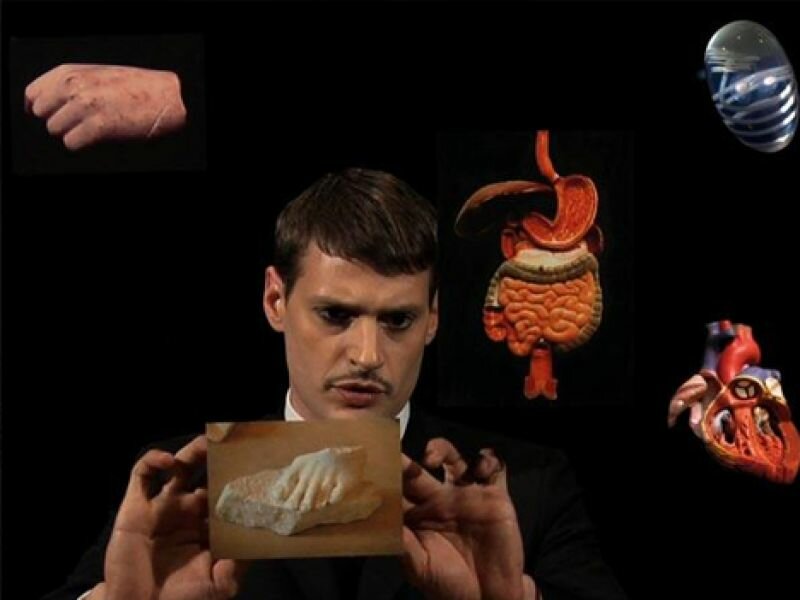
Video still from Théâtre de poche by Aurélien Froment
Courtesy of the artist and Motive Gallery, Amsterdam
This is a excerpt from a lecture for a Studium Generale on Systems. In her talk, she speaks of the difficulty of using language to describe systems because it, too, is a system.
I played a game this weekend:countless square cards were laid out onto a large glass table covered in a grid, the compartments of which were sized to match the cards. There were always two corresponding cards like in the game “memory.” The player’s task was to find the pairs. But unlike memory, the cards were never identical. Pairs belonged “together” for different reasons. The reasons for their compatibility differed: the partner to a yellow card might be a painter’s brush dipped in the same colour. Or two cards pictured different components of what was obviously the same machine. My fellow player and I searched for pairs while we argued why two images matched. Ultimately, it wasn’t the person with the tallest stack of corresponding cards who won. What was more important for winning was having the best arguments for why two cards matched. This game was about image, about how we relate, how write systems, tell stories, and how we write histories.
This game, an artwork by the French artist, Aurélien Froment, was based on a magic trick by a Flemish magician, who in turn, had learned the trick from his English colleague, Arthur Lloyd. During his act, Lloyd asked his audience to name an object, after which he conjured the corresponding card out of his jacket pocket. At the end of his career, Lloyed carried 1600 cards in his pockets.
After the show, as we discussed this “théâtre de pôche/pocket theatre,” we came to the conclusion that it wasn’t only this magic trick that had inspired this game as art/art as a game. In fact, the technique of the magic trick also recalled how travelling bards and troubadours memorised their songs and poetry during the Middle Ages. Because of the customised nature of their performance, it was inevitable that the delivery of their song would never be identical in any two places. It was undisputable that disparities in delivery such as the trill of voice and the omission of certain passages were part of the act. Inherent within their act was a newsworthy element, something which now leads to controversy – an artwork must be a closed entity, referring to itself. It was a given that the poet actively include daily life, in other words what we now would call society. The game shows that language, too, is capable of making this connection. To play this game of language, one had to wander, to sing, sit silent, guess and gamble, look further, to not follow the fixed markings of the grid but to find one’s own path instead.